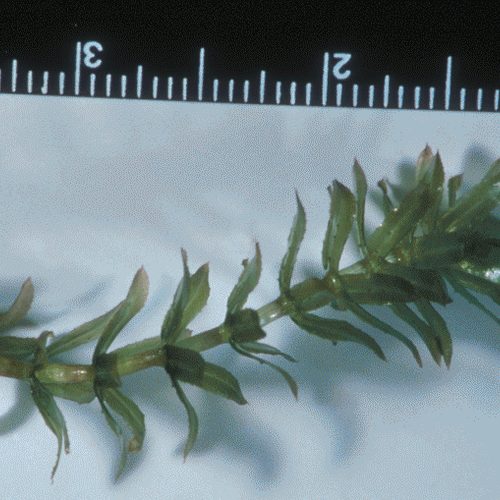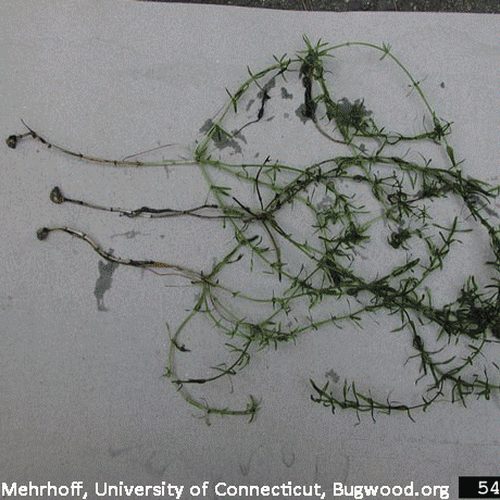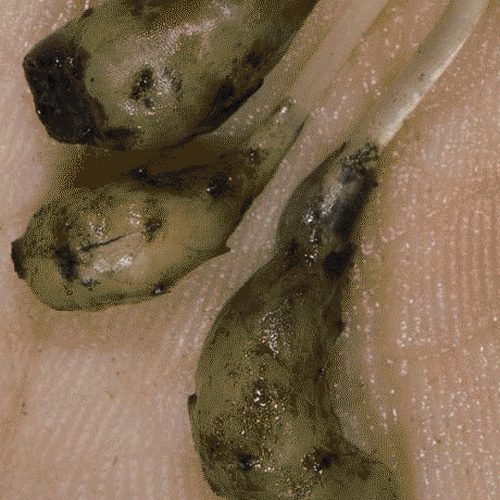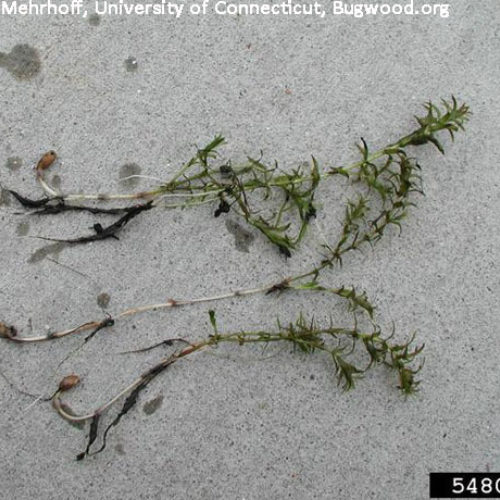Hydrilla
Hydrilla verticillata
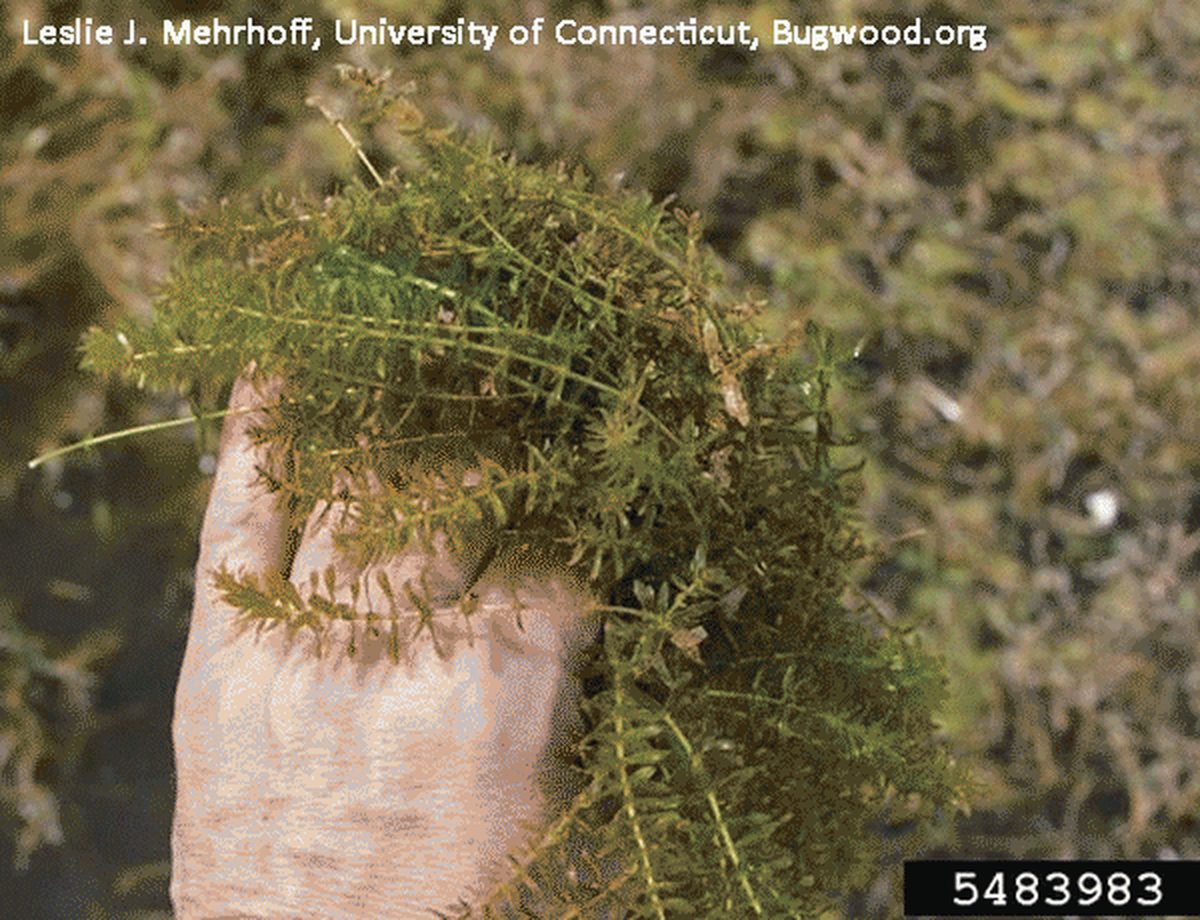
Family: Hydrocharitaceae
Other Common Names: water-thyme, Florida-elodea
Weed class: A
Year Listed: 1996
Native to: Parts of Asia, Africa, and Australia
Is this Weed Toxic?:
not known to be
Legal listings:
WAC 16-752; WSDA Quarantine list (prohibited plant list)
Why Is It a Noxious Weed?
Hydrilla forms dense canopies that often shade out native vegetation. Extensive single species stands provide poor habitat for fish and other wildlife. Once established, it destroys freshwater recreational opportunities by forming extensive surface mats.
How would I identify it?
General Description
Hydrilla is a submersed perennial herb, growing rooted to the bottom, in either still or flowing water. Hydrilla may be moneocious plants (male and female flowers on the same plant) or dioecious (male and female flowers on different plants).
Flower Description
Female flowers have 3 translucent petals and 3 whitish sepals and float on the water’s surface. Male flowers have 3 white to red narrow petals and 3 white, red or brown sepals and form in leaf axils to break free when mature to float on water’s surface.
Leaf description
Leaves are in whorls of 3 to 10 along the stem, each 2 to 20 mm long by 1 to 4 mm wide. Leaf margins generally have sharp spines, giving them a toothed appearance. Spines occur on lower midvein, causing plant to feel rough.
Fruit Seed Description
Hydrilla can produce seeds but it mainly spreads by tubers, turions and stem fragments.
May Be Confused With
Canadian waterweed, Elodea canadensis, native to Washington, and Brazilian elodea, Egeria densa, native to South America and a Class B noxious weed, look similar to Hydrilla. For plant identification assistance, please contact your county noxious weed coordinator.
Where does it grow?
Hydrilla grows rooted to the bottom of lakes, ponds, springs, ditches, marshes, wet ricefields, slow streams, and tidal waters, where it is submersed in either still or flowing water. Please click here to see a county level distribution map of hydrilla in Washington.
How Does it Reproduce?
Hydrilla reproduces in many ways: via underground rhizomes and above ground stolons; from stem fragments, fragments can be as short as two leaf whorls; rhizome fragments; sprout from root crowns; seeds; by turions—buds in leaf axils or stem tips; tubers.
How Do I Control It?
General Control Strategy
Hydrilla can be difficult to control, because it spreads by fragments, and mechanical methods may spread Hydrilla further. Care must be taken to remove all of the plant.
Mechanical Control
Because this plant spreads readily through fragmentation, mechanical controls such as cutting and harvesting should be used only when the extent of the infestation is such that all available niches have been filled. Using mechanical controls while the plant is still invading will tend to enhance its rate of spread.
Cultural Control
Control of small populations can be achieved by covering the sediment with an opaque fabric that blocks the light. Altering the water level, by lowering the water to allow soil to dry out, may be a method used to control Hydrilla.
Biological Control
Triploid grass carp will eat Hydrilla. Because it is an exotic species, its introduction is tightly regulated, and only the sterile triploid fish are allowed to be introduced in most states, including Washington.
Herbicide Control
Selected aquatic herbicides can also be very effective. Because herbicide availability and regulation differ between states, we recommend the Washington Department of Ecology website for information on aquatic weed management and herbicides, or contact your county noxious weed coordinator.
For More Information
See our Written Findings for more information about hydrilla (Hydrilla verticillata).
WA Department of Ecology information on hydrilla



